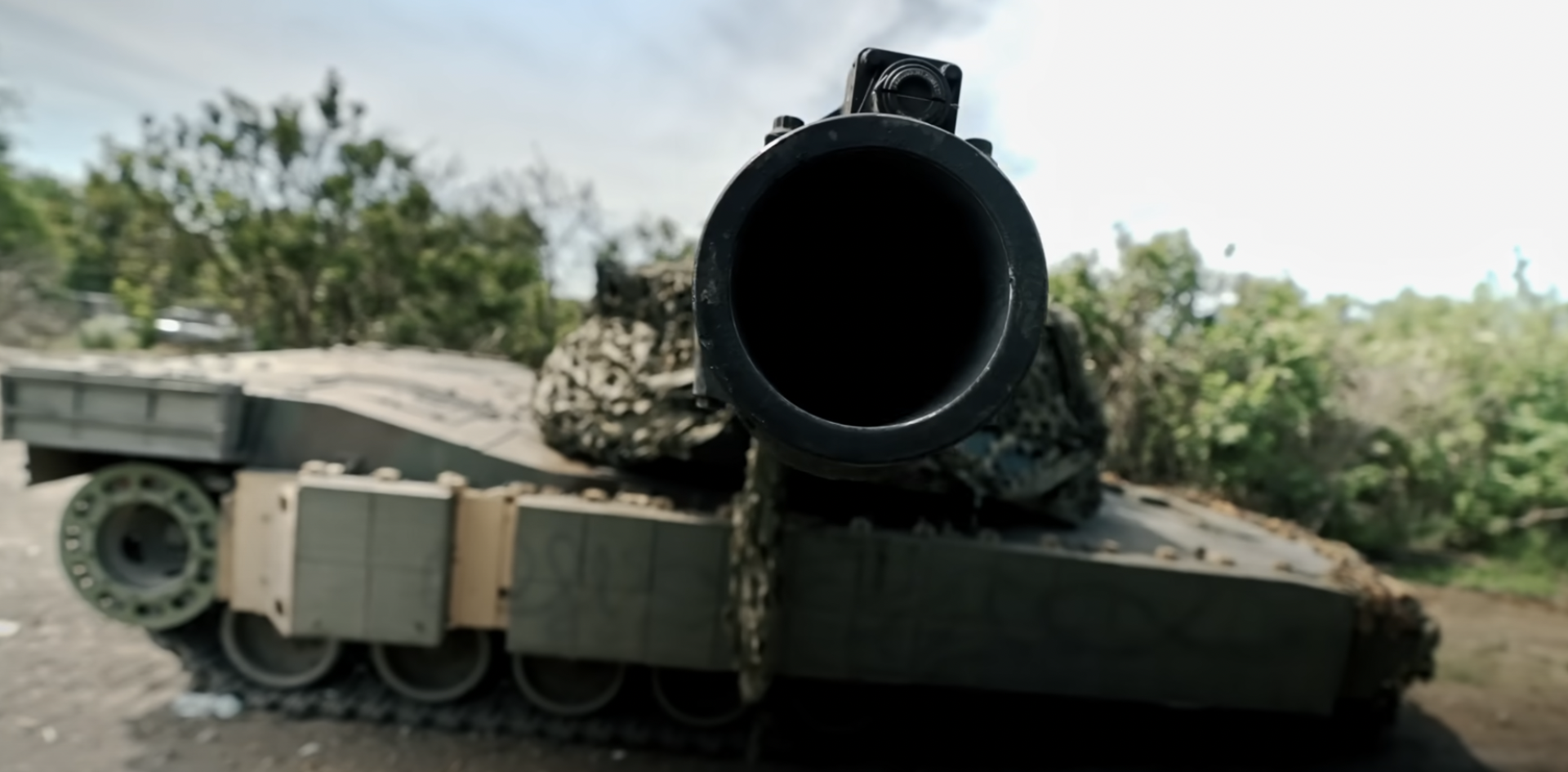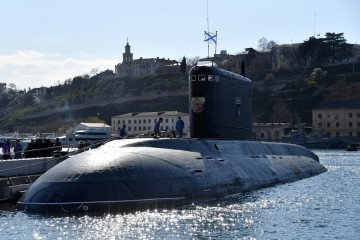- Category
- War in Ukraine
Advanced US Abrams Tanks Experience Highs and Lows On Avdiivka Front

In early 2023, President Biden announced that he would send 31 U.S. M1 Abrams tanks to Ukraine, describing them as "the most capable tanks in the world." After a year of preparation, in February 2024, they were finally rolled out onto Ukraine's frontlines.
Experts claim, "Abrams is a technological marvel, by far the best main battle tank ever fielded." So, how do these tanks compare to others, and what challenges do they face?
There have been mixed reviews about their condition and performance, and there are even rumors that these tanks have been withdrawn from the battlefield.
Our team had the opportunity to talk to the Ukrainian crew of an M1A1 Abrams tank near the city of Avdiivka—where ferocious fighting has been ongoing for more than half a year—to hear firsthand how the Abrams performs.
What are M1A1 Abrams?
The M1 Abrams tank variant is known as one of the most powerful armored combat vehicles in the world. Its first prototypes were completed and delivered to the US Army in 1980. The tank was named after General Creighton Abrams, former commander-in-chief of the US Army.
Over time, the Abrams has been constantly upgraded to keep it competitive in today's military environment. The Abrams is an important asset to the U.S. arsenal and is a highly regarded weapon of war. In January 2023, President Biden announced that he would send a total of 31 from their reserves, where they were repaired and converted before being sent to Ukraine.
As with all new equipment, having the knowledge and tools to use it is vital. Last year, Ukrainian forces—from crew to maintenance personnel—were sent to a military base in Germany to undergo training.
The M1A1 SA (situational awareness) variant, though not the newest, was the one that got there the fastest and in February 2024, Ukraine finally saw them deployed and rolled out on the frontline for their first combat mission.
With an enhanced laser rangefinder, thermal imaging camera, stabilized sight, and a remotely controlled weapon system for precise firing while in motion, this tank is one of America's most prized armored weapons. The tanks have a 'force tracking' system, which highlights both friendly and enemy movements, tracking them in real-time during the fast-moving combat environments.
How do Abrams compare to other tanks?
The Abrams, compared with the T-72, used by both Russia and Ukraine, has superior maneuverability. However, the T-72 can travel faster and further before refueling than the Abrams. But in these brutal war conditions, the Abrams' heavier armor and survivability champions the T-72; it's far more agile for the complicated terrains on Ukraine's frontlines and unlike the T-72, it can reverse at speed—a key capability also found in other Western systems such as the Leopard 2.
The Abrams boasts a very accurate and high-velocity smoothbore cannon that hits hard targets, such as tanks, up to around 1.8 miles away. Its 50-caliber M2 machine gun can shoot 850 rounds a minute, striking targets up to around 4 miles away. The T-72's cannon has around the same firing range, but the machine gun is far inferior, only striking targets less than a mile away.
The Russian T-90M, also known as Proryv-3, is claimed to be the "most advanced armored vehicle," according to Russian media. During its development, "M1 Abrams was treated as the main competitor," according to Russian state-owned defense corporation Rostec.
Michael Peck, a military technology and defense expert, says that the T-90 does have one advantage: it is much lighter, making it easier to cross bridges, for example. They also have diesel engines, like the Leopard 2, but the Abrams' sensors, range, and accuracy of fire are far superior—overall, the T-90 is no match for the Abrams.
When comparing the Leopard 2 and the Abrams, there aren't any vast differences. They have comparable speeds and power, even regarding their armor; there aren't any stark comparisons. However, the Leopard 2 takes diesel, and the Abrams, jet fuel—meaning that the Leopard 2 is far easier to sustain. Ukrainian soldiers on the front are already stretched and need weapons with logistical ease and maintainability. Though the Abrams is undoubtedly a top contender against several tanks used on the front, what are its downfalls?
Abrams are still fighting the Avdiivka front
In April 2024, two U.S. officials told Associated Press that all Abrams were being taken off the frontline, in part due to their inability to withstand Russian drones. This story flooded the media, but even with a few losses, the claim that they've been completely removed from battle has been refuted.
The 47th Mechanized Brigade was the crew to get their hands on these tanks and are still using them near the city of Avdiivka—a city which has endured heavy clashes for more than half a year and a frontline city since the war started in 2014. Daily enemy attacks are a reality—for example, 37 combat engagements were recorded on June 17th alone.
The Abrams are not as capable of working the Ukrainian frontline as the U.S. had initially boasted, partly due to their age.
The mechanic explained, "These tanks are old. There are problems with seals and various parts. When it sucks in all the dust, it damages engine parts, and the tank loses thrust and power."
Another issue, as seen with other Western-supplied weapons, is repairs and replacements. "It's a little inconvenient because spare parts are sent from abroad, and if you need to change something right now, it can be problematic. We change what we can, and if we can't, we have to wait for the parts. And it takes time," the mechanic said. To combat this issue, the Biden administration "is moving toward lifting a de facto ban on American military contractors deploying to Ukraine—four U.S. officials told CNN—to help the country's military maintain and repair U.S.-provided weapon systems."
This policy does not include sending troops to fight and is for maintenance only. Though not yet signed off by Biden, this policy change would mark a significant shift and ensure maintainability for Western weapons, keeping them active on the front. A major threat against all armored vehicles on Ukraine's front, one that isn't so easily combatted, are UAVs (unmanned aerial vehicles) such as Kamikaze FPV (first person view) drones.
Drones are a threat to combatants and equipment alike, and tanks are just as vulnerable. The 47th Brigade have already lost some brothers-in-arms during the heavy clashes. The standard armor in which the tank boasted was not enough for the intense modern battlefield.
FPVs are cheap to produce, far cheaper than Abrams, and can easily immobilize the tanks, making them vulnerable to follow-up drone attacks such as a Lancet strike and destroy. The tank loader from the 47th Brigade recalls an attempted Lancet attack, "There was one case where a Lancet drone came at us while we were standing still, waiting for the order. The branches above us saved us—that's one I won't forget anytime soon."
What can be done to protect Abrams from drones?
In order to tackle the threat of UAVs, the crew installed ARAT reactive armor on the turret itself along with Ukrainian-made Kontakt-1 reactive armor on the tank itself. They designed, welded, and installed it themselves.
"If hit directly by ATGMs, UAVs, and Lancets, it can withstand anything," the tank commander explained. "The tanks themselves held up well. Those first missions without extra protection were rough, and we took some losses. Things are a bit better now, though. We've managed to add some protection, and the tanks are performing as expected. We keep working; that's what we do."
Ukrainians have often applied innovative adaptations and inventions to Western weapons to suit their front, a war like this has never been seen before. An initiative to combat the FPVs is "Steel Front," a collective group of businesses run by Ukrainian steel magnate Rinat Akhmetov who have developed new shield cages to help protect the Abrams from the persistent threat of FPVs, though not yet been used in action. The cages are unlikely to hinder the tanks' movement and crew's visibility, "covering the sides of the Abrams' turrets, and the ammunition storage bustle on the tank's rear which is one of the tank's 'most vulnerable points,'" Matthew Moss, a small-arms expert, told Newsweek.
Even with the 47th Mechanized Brigade's innovative adaptations, and developments from groups such as "Steel Force," the biggest threat are aerial guided bomb missiles. The Ukrainian military and the government alike continue to seek long-range missiles to exterminate Russian targets at the source. Recently, Western allies lifted restrictions and allowed Ukraine to strike over enemy lines, on Russian territory. However, the U.S. has still denied Ukraine the use of long-range ATACMS.
"They have a lot of aircraft, and they're terrorizing us with guided aerial bombs. I saw it myself," the mechanic recalled, "I was lying in a dugout when a Russian aircraft started circling overhead. It dropped a bomb just 70 meters away. Thankfully, we're still here."
The 47th Mechanized Brigade continues to hold their position with Abrams, though more needs to be done to support Ukraine to make serious advancements in this war.
-46f6afa2f66d31ff3df8ea1a8f5524ec.jpg)

-29a1a43aba23f9bb779a1ac8b98d2121.jpeg)


